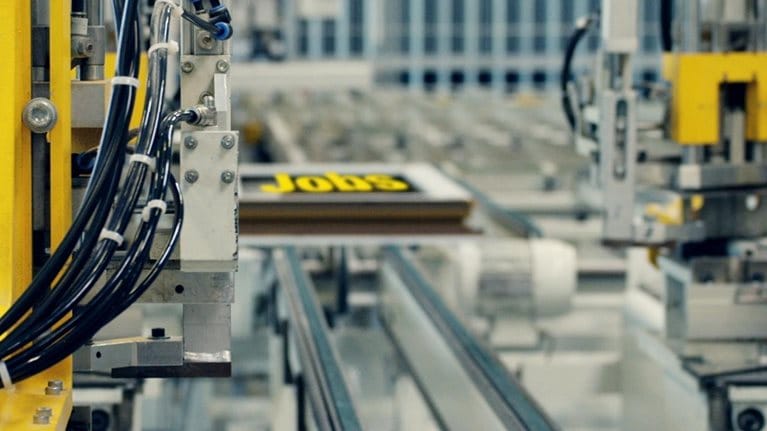Digital technologies, automation, and artificial intelligence (AI) could boost Swiss productivity by around one percentage point a year in the period to 2030. However, to capture that productivity bonus, Swiss companies need to undertake bold and comprehensive digital transformation, and work with governments to equip the workforce with the skills that will be in demand.
A large part of the potential boost to productivity growth may arise from the replacement of labor by recent developments in AI-based automation that offers significant opportunities to innovate and adopt new business models.
More than half of all activities today are already automatable by adopting and adapting current technology. Typical technology adoption curves suggest that at least half of that potential could be realized by 2030, and possibly more if a technology race materializes. Using conservative assumptions and an average or midpoint scenario based on technology benchmarks, about one-fifth to one-quarter of all tasks performed in Switzerland’s labor market—equivalent to 1.0 million to 1.2 million jobs—could be automated by 2030. This estimate draws on McKinsey Global Institute research on the future of work. Overall, 46 percent of hours worked in Switzerland today have the potential to be automated by using currently available technology. This is slightly below the global average of 50 percent.
The activities that are most susceptible to automation include predictable physical tasks as well as the collection and processing of data. These three activity categories make up 50 percent of working hours in Switzerland and, in each case, their automation potential is greater than 60 percent.
Stay current on your favorite topics
Job displacement is a regular feature of modern labor markets, but the pace of change could double. However, this does not necessarily mean that there will be net job losses in Switzerland (Exhibit 1). Activities equivalent to 400,000 new jobs could be created that are linked to technology itself (hardware/software), and companies implementing digital solutions. Another 400,000 job equivalents could be created as automation and AI drive real income growth, boost consumption, and increase demand for domestic employment, feeding into more economic growth.

There is major uncertainty about the shape of future demand for a small open economy like Switzerland, but even more jobs could be created if digitization were to increase the competitiveness of export sectors. Over the past 15 years, Switzerland has expanded its exports from approximately 50 to 65 percent of GDP. Net exports grew from about 6 to 11 percent of GDP. The largest categories of exports today are chemicals and pharmaceutical products; machines, appliances, and electronics; watches and precision instruments; financial services; and tourism. Assuming Switzerland can adopt digital technologies rapidly and increase its global competitiveness and exports, in an illustrative scenario some 20,000 to 70,000 jobs could be created. Today, around 1.4 million jobs in Switzerland are dependent on the exports of the top six exporting sectors.
The impact on sectors will differ (Exhibit 2). The most extensive displacement of activities could be in retail and wholesale trade, manufacturing, the public sector, and finance that together account for about half of all salaried employees and around 60 percent of Swiss GDP.
- Retail. In our midpoint adoption scenario, we estimate that 25 to 30 percent of all tasks in Swiss retail and wholesale could be displaced over the next 12 years. While rising real incomes and consumption and technology-related job creation may create around 10 percent new jobs, this will not be enough to compensate for job losses. Overall employment in the sector looks set to decline by up to a net 100,000 to 140,000 people employed.
- Manufacturing. Our analysis suggests that 25 to 30 percent of jobs in manufacturing could be displaced. This is almost twice the percentage of new jobs that might be created on average, leaving a net decline of around 15 percent.
- Public sector. There is a very significant opportunity to digitize and automate in the public sector. In public administration, the driver of adoption will be a bid for efficiency and improved services for citizens, and we expect net job reductions of 10 to 15 percent. However, in healthcare and education, the focus is likely to be on raising quality and freeing up resources to support further growth. We expect that growth in jobs will outweigh displacement in healthcare, leading to net job gains of 5 to 15 percent. We anticipate that employment in education will remain stable.
- Finance. In our midpoint scenario, automation could have an impact on 30 to 40 percent of all hours worked in the financial sector in Switzerland. Applied to the financial sector workforce as it stood in 2016, this would translate into up to 100,000 employees (out of a total of 249,000). We expect opportunities for job gains of about 20,000 to 30,000 by 2030. This would not be sufficient to compensate for declining employment levels in the sector but offers a significant upside that could be optimized if Swiss banking and insurance retains and improves its global competitiveness.

Switzerland has already had an incentive to digitize and automate because of relatively high salaries, and is arguably well positioned to master the transition. It currently has some of the most competitive companies globally. However, it needs to sustain this position and expand jobs linked to exports either by supplying digital technologies and services or adopting them rapidly in its most globalized sectors.
Switzerland also needs to ensure that economic gains are reinvested in the economy to ensure inclusive growth in which productivity growth translates into rising consumption, investment, and robust demand for jobs rather than accumulation of wealth at the top. Fortunately—in contrast to the United States—there are few signs in Switzerland as yet of declining labor shares of income or polarization of wages.
As Switzerland prepares for these changes to its labor markets in the digital and automation ages, it faces two imperatives: accelerating the digitization of the economy in order to remain competitive and boost growth, and developing the skills that labor markets will require in the future. Failing to digitize fast enough could dampen competitiveness and lead to slow growth in well-paying jobs; failing to reskill fast enough could mean that news jobs cannot be filled.
Companies need to embark on more comprehensive digital transformations, redesigning business models, customer journeys, and business processes so that they embed a “digital first” strategy. They need to develop digital operations and marketing with robotic process automation and advanced analytics, and reorganize their activities to support digital transformation. The risk to companies that do not digitize and automate is that proactive incumbents and new, digitally enabled competitors cannibalize their business. Policy makers can encourage the transition by opening sectors to such disruption.
Today, Switzerland has a pool of highly skilled talent including well-educated immigrants, and a strong education system. Nevertheless, an extensive skill shift looms. We estimate that demand for tasks that require basic cognitive or physical and manual skills could decline by around 20 percent. Conversely, the need for social and emotional and technological skills is set to rise by around 20 percent and up to 50 percent, respectively (Exhibit 3). This transition will not be easy, as current job mobility is particularly low among those most strongly affected. The skill shift will exceed the regular rate at which labor and skills have dropped out of the market (through retirement, for instance).

Switzerland’s higher education institutes only produce around 3,000 technology graduates a year—less than half the estimated number needed with advanced technological and IT skills. Education providers will need to shift their offers toward teaching technological and emotional skills, and toward lifelong learning. Leading companies have already embarked on large-scale reskilling efforts, but more need to join. Immigration will need to continue to be part of the answer to Switzerland’s shifting need for skills in the digital and automation era.
Download the full report this article is based on, The future of work: Switzerland’s digital opportunity (PDF–4.1MB).
Download the In Brief:
English (PDF–1.1MB)
German (PDF–1.1MB)
French (PDF–1.1MB)


